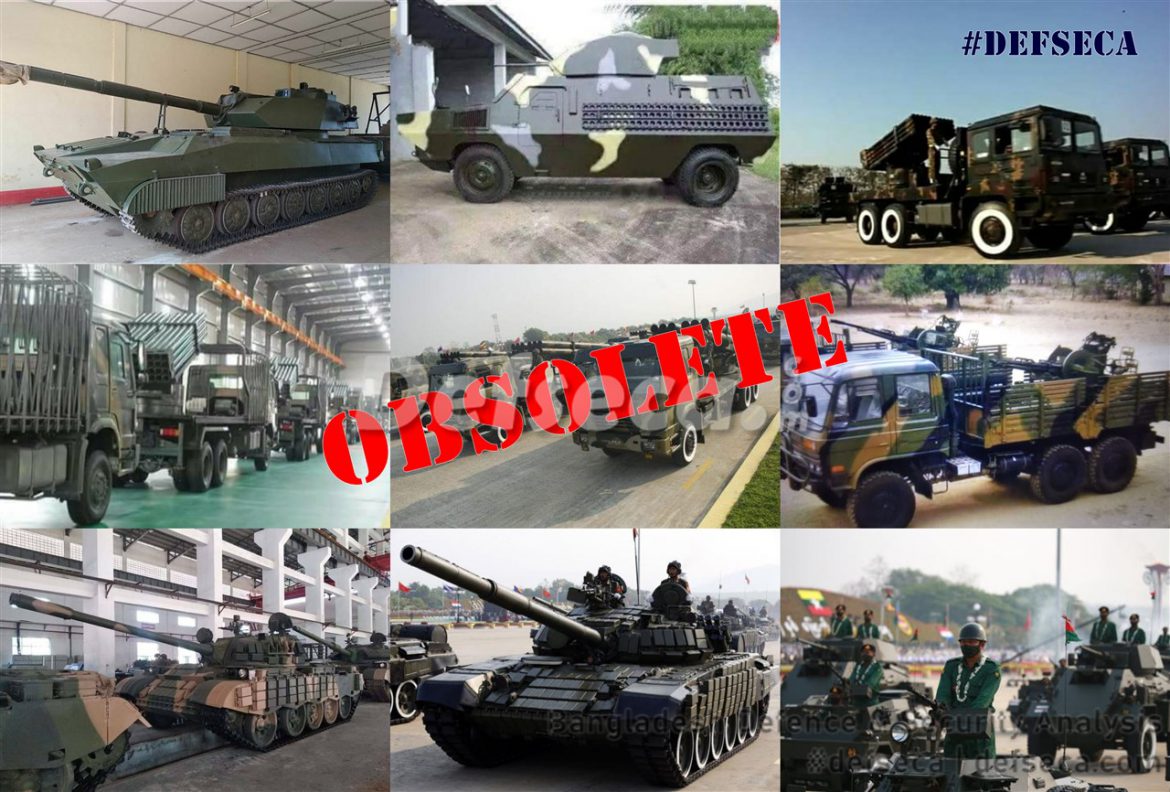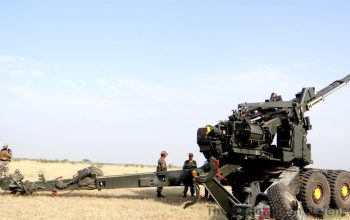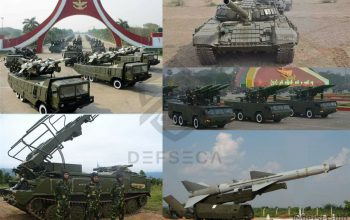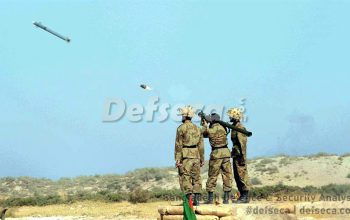The Myanmar defence industries invested resources in the development of the domestic defence industries in the face of growing sanctions and lack of spare parts for most of the older generation weapons it operates. Along the way it received cooperation from countries such as China, Ukraine, Pakistan, Germany and India to do so.
At present Myanmar Directorate of Defence Industries, is producing or assembling armoured vehicles, utility vehicles, towed artillery, self-propelled artillery, MLRS, mortars, air defence missiles, small arms, anti-aircraft guns, anti-tank weapons, land mines, ammunition, bombs and miscellaneous products.
Apart from a few modern equipment most of the equipment assembled or manufactured at these plants are considered obsolete as per international standards. While they have some relevancy during low intensity counter insurgency operations, they hold little value in a protracted conflict with a more advanced adversary.
It was common for insurgent groups in Myanmar to abandon or destroy caches of Myanmar-made military equipment because the quality of the locally produced arms and ammunition were deemed so poor that it did not meet the expectation of the insurgents.
The concerned authorities in Myanmar tried to improve the quality of small arms and ammunition production at its facilities. Most improvements however, added cosmetic features to show a façade of improvement.
Myanmar made several attempts to manufacture armoured vehicles locally. These comprised of largely indigenous designs utilising available commercial trucks and adding slabs of steel plating on them. They were cancelled in favour of assembling Ukranian made BTR-3U APCs and products based on MT-LBSh and 2S1 chassis. The DI even made unauthorised copies of HMMWs, Jeeps and assembled Sino-Truk trucks.
Reports suggest Myanmar started production of 105 mm howitzers with the help of Singapore technicians but no evidence of this was disclosed to public. Myanmar DI also hopes to assemble the 2S1 Gvozdika, which is a 1970s era Soviet SPH again highlighting the impracticality with the present.
The MLRS manufactures/assembled in Myanmar are mostly of Chinese origin. They are unguided, thus limiting their combat effectiveness. In times of war they can be quickly neutralised by longer range, guided MLRS, which are possessed by the armies of almost every neighbouring country.
Myanmar not surprisingly found great utility with mortars given its mountainous terrain. It produces five mortar models randing from 60 mm commando mortars, to 81mm mortars and 120 mm heavy mortars, each with claimed production rate of 400 per year, except for the 120mm mortar, which is produced at a rate of 50 per year.
Anti-aircraft guns produced in Myanmar are mostly non-radar controlled type, though the MAA-1, which is a 35mm copy of Chinese Type 90 that was itself an unauthorised copy of the most basic Swiss Oerlikon GDF attempts to bridge a definitive technology gap from other models that are of 25, 14.5 and 12.7mm calibres.
Myanmar obtained licensed production of SA-16 copies from North Korea. It also manufactures KS-1M medium range SAM. Reports claimed the country tried to obtain North Korean-origin Hwasong-5 SRBMs (Scud-B) in an attempt to develop a deterrence against neighbouring countries, but this too never materialised after China intercepted parts at one of its ports found from a docked ship.
Anti-tank weapons produced in Myanmar are of three types including the MA-10, which is again obsolete Chinese RPG-7 copies (Type 69-1), the MA-14 82mm (Chinese Type 78 recoilless rifle) and MA-84 Mk-I/II (unauthorized copies of Carl Gustaf M2/M3 possibly obtained from India). All three weapons are unguided, short ranged and have their own deficiencies in characteristics including inability to fire from closed spaces such as buildings in urban areas.
While the majority of the international community signed anti-mine treaties, Myanmar adopted a policy to plant anti-personnel mines all along the border believing their country is under imminent invasion by the neighbouring countries. This typical isolationist idea carefully nurtured by the junta in the Burmese psyche is having an impact on the development of Myanmar in its entirety.
Myanmar today produces five types of mines including four of which are anti-personnel mines and one anti-tank mine, all of which are mostly copied from China including two M14 and M16 mines of US design dating back to the 1950s.
Myanmar’s defence industries are producing almost all types of ammunition required for small arms, mortars, unguided aerial munitions, rockets and naval munitions with technology acquired from China, North Korea and Eastern Europe. Most of these are either things countries such as China copied from Western countries themselves, so the quality or technology behind them would never be up to the standards of the OEM.
What’s alarming is that for a claimed strength of over 400,000 personnel in the Myanmar Army, the Myanmar Defence Industries is only capable of producing 60 million small arms ammunition per year, which is a much smaller rate of production compared to neighbouring countries, especially as Myanmar’s DI manufactures a huge number of calibres pertaining to eastern and western standards.
It appears Myanmar’s dictatorship has tried to equip its armed forces in a haphazard manner to give a cosmetic impression of a strong military capability. In reality they could be nothing more than kickback schemes engineered by the junta to fill their pockets.




